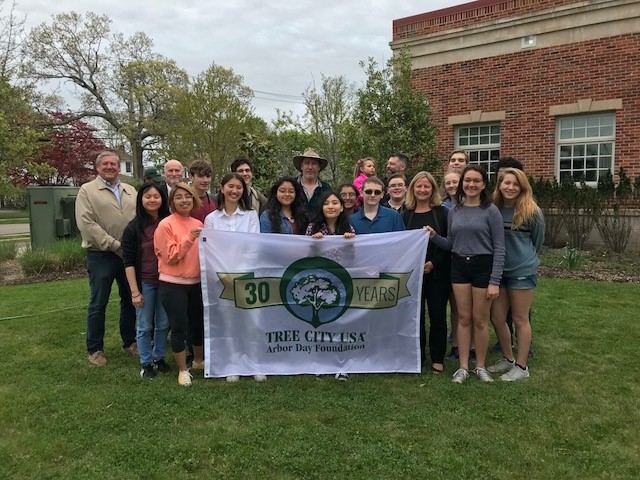Four Standards for Tree City USA Recognition
Standard 1
A Tree Board or Department
Someone must be legally responsible for the care of all trees on city- or town-owned property. By delegating tree care decisions to a professional forester, arborist, city department, citizen-led tree board or some combination, city leaders determine who will perform necessary tree work. The public will also know who is accountable for decisions that impact community trees. Often, both professional staff and an advisory tree board are established, which is a good goal for most communities.
The formation of a tree board often stems from a group of citizens. In some cases a mayor or city officials have started the process. Either way, the benefits are immense. Involving residents and business owners creates wide awareness of what trees do for the community and provides broad support for better tree care.
Standard 2
A Tree Care Ordinance
A public tree care ordinance forms the foundation of a city’s tree care program. It provides an opportunity to set good policy and back it with the force of law when necessary.
A key section of a qualifying ordinance is one that establishes the tree board or forestry department—or both—and gives one of them the responsibility for public tree care (as reflected in Standard 1). It should also assign the task of crafting and implementing a plan of work or for documenting annual tree care activities.
Qualifying ordinances will also provide clear guidance for planting, maintaining and/or removing trees from streets, parks and other public spaces as well as activities that are required or prohibited. Beyond that, the ordinance should be flexible enough to fit the needs and circumstances of the particular community.
For tips and a checklist of important items to consider in writing or improving a tree ordinance, see Tree City USA Bulletin #9.
Standard 3
A Community Forestry Program With an Annual Budget of at Least $2 Per Capita
City trees provide many benefits—clean air, clean water, shade and beauty to name a few—but they also require an investment to remain healthy and sustainable. By providing support at or above the $2 per capita minimum, a community demonstrates its commitment to grow and tend these valuable public assets. Budgets and expenditures require planning and accountability, which are fundamental to the long-term health of the tree canopy and the Tree City USA program.
To meet this standard each year, the community must document at least $2 per capita toward the planting, care and removal of city trees—and the planning efforts to make those things happen. At first this may seem like an impossible barrier to some communities. However, a little investigation usually reveals that more than this amount is already being spent on tree care. If not, this may signal serious neglect that will cost far more in the long run. In such a case, working toward Tree City USA recognition can be used to reexamine the community's budget priorities and redirect funds to properly care for its tree resources before it is too late.
Standard 4
An Arbor Day Observance and Proclamation
An effective program for community trees would not be complete without an annual Arbor Day ceremony. Citizens join together to celebrate the benefits of community trees and the work accomplished to plant and maintain them. By passing and reciting an official Arbor Day proclamation, public officials demonstrate their support for the community tree program and complete the requirements for becoming a Tree City USA!
This is the least challenging—and probably most enjoyable—standard to meet. An Arbor Day celebration can be simple and brief or an all-day or all-week observation. It can include a tree planting event, tree care activities or an award ceremony that honors leading tree planters. For children, Arbor Day may be their only exposure to the green world or a springboard to discussions about the complex issue of environmental quality.
The benefits of Arbor Day go far beyond the shade and beauty of new trees for the next generation. Arbor Day is a golden opportunity for publicity and to educate homeowners about proper tree care. Utility companies can join in to promote planting small trees beneath power lines or being careful when digging. Fire prevention messaging can also be worked into the event, as can conservation education about soil erosion or the need to protect wildlife habitat.

